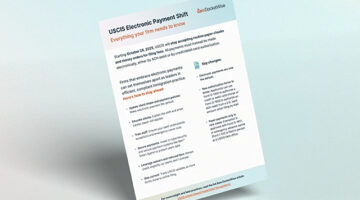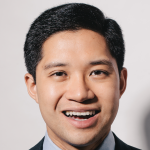 Biglaw partnership ain’t what it used to be. That’s the main takeaway from Sara Randazzo’s (fantastic) piece in last Saturday’s Wall Street Journal, Being a Law Firm Partner Was Once a Job for Life — That Culture Is All but Dead. It offers a comprehensive look at the evolution of partnership, and if you’re trying to explain to your non-lawyers friends how Biglaw today isn’t what they think it is, just give them this article.
Biglaw partnership ain’t what it used to be. That’s the main takeaway from Sara Randazzo’s (fantastic) piece in last Saturday’s Wall Street Journal, Being a Law Firm Partner Was Once a Job for Life — That Culture Is All but Dead. It offers a comprehensive look at the evolution of partnership, and if you’re trying to explain to your non-lawyers friends how Biglaw today isn’t what they think it is, just give them this article.
Of course, for those who work in or around Biglaw, the big picture here is nothing new. But Randazzo’s article, exhaustively reported as well as superbly written, contains juicy tidbits and fun facts that will be news even to industry insiders. Consider the lede, which reveals the range of compensation for equity partners at Kirkland & Ellis:
Four hundred of Kirkland & Ellis LLP’s top lawyers gathered in May at an oceanfront resort in Southern California to toast another banner year.
Kirkland was the highest-grossing law firm in the world for the second year running, earning $3.76 billion in revenue. When a slide flashed on the screen, showing the value of the firm’s shares, the partners in the room quickly did the math. They would be taking home $1.75 million to $15 million.
Not invited were another 560 partners, who were back at the firm’s 15 offices around the world, working. Though outwardly carrying the same title as those lounging poolside in California, they hold no equity in the firm and generally can expect to make $800,000 at most. While a comfortable living, the salary and its implied second-class status is not the reward many expected after striving to join the venerated partnership.
This is life at the modern law firm, where not all partners are created equal, and data and money rule.

Stand With Survivors: Legal Tools To Make A Real Difference This DVAM
Enhance your legal skills to advocate for survivors of intimate partner violence.
Indeed. As Randazzo notes later on in the piece, the “partner pay spread,” or compensation ratio between the highest- and lowest-paid partners at Kirkland, is 43-to-1. Under the more traditional model, followed by the (small and shrinking number of) New York lockstep firms, the ratio is typically 3-to-1 or 4-to-1 at most.
The ratio is 43-to-1 if you consider Kirkland’s non-equity partners — or “non-share partners,” in K&E parlance — to be “partners.” There’s a good argument to be made that a non-equity partner is no partner at all (and Joe Patrice makes it in his own (very astute) commentary on Randazzo’s article, Repeat After Me, ‘Partnership Without Equity Is Not A Partnership’).
The WSJ article contains several other interesting data points about partner pay (and partner pay spreads) at top law firms:
- At Simpson Thacher, top partners earn roughly $9 million, and the partner pay spread has increased from 4-to-1 to 6-to-1 in recent years.
- Average profits per partner at Fried Frank have doubled since 2013, to more than $3 million last year, and the spread today is now 13-to-1.
- In his strongest years, superstar litigator David Boies — formerly of Cravath, now of of Boies Schiller & Flexner — took home $25 million.

USCIS shift to electronic payments: What immigration firms need to know
As of October 2025, U.S. Citizenship and Immigration Services requires electronic payments for filing fees. Learn key updates, exemptions, and how firms can prepare.
The rise of the non-equity partner has been criticized on a number of grounds. First, as noted in the WSJ piece, it lets equity partners jack up the billing rates of non-equity partners, often to north of $1,000, without having to share the wealth with them (or take a hit in the American Lawyer’s closely watched “profits per partner” or “PPP” rankings, which consider only equity partners).
Second, as argued by Joe Patrice, it’s fundamentally dishonest: “Can’t we all just go back to a reality-based vernacular? If the attorney is not a partner in the enterprise, they are not a ‘partner.’ If attorneys want more recognition for career advancement, then do a better job of branding the importance of the firm’s counsel. This whole thing has gotten out of hand.”
There’s validity to these critiques. But since the non-equity partner role isn’t going away — if anything, it’s on the rise (in 2000, 78 percent of partners were equity partners, while in 2018, only 56 percent were) — let’s consider the advantages, to lawyers and law firms:
1. The cocktail party effect. Lawyers are obsessed with prestige — and it’s far more prestigious to be able to claim at a cocktail party that you’re a “partner,” as opposed to a “counsel” or an “associate.”
Most non-lawyers won’t know the difference. And even if the non-lawyer does know about the divide between equity and non-equity partners, it would be quite gauche for the person to ask, “But are you an equity partner?”
Sometimes you can guess, based on factors like seniority, whether someone is an equity or non-equity partner. But much of the time, it’s a secret known only to the firms (which is why it’s so hard to get good data on diversity, or the lack thereof, in Biglaw equity partnerships).
(Funny aside: I was chatting with a matrimonial lawyer about the WSJ article, and he said that frequently even the spouse of the purported “partner” doesn’t know: “Spouses often think their husband/wife has equity at a firm and then learn, during the divorce litigation, that he/she is basically counsel with a partner title.”)
2. The business development advantage. This is an offshoot of the cocktail party effect. It’s much easier to land clients, especially large corporate clients, if you can introduce yourself as a “partner.”
As a recruiter, I sometimes work with candidates who, based on how long they’ve been practicing, could be counsels or partners. I ask these candidates how strongly they feel about title. Some say it’s not important, but others say — and understandably so — “If I’m going to build a practice, I need to have that ‘partner’ title.”
3. Greater flexibility and a longer runway. The traditional partnership model was “up or out”: if you didn’t make partner after the prescribed period, you had to find yourself another job. The new model of “partnership,” featuring the non-equity role, allows firms to hold on to talented lawyers for longer; these lawyers can continue to service clients, often in niche areas, without worrying about having or building a book of business. (Yes, counsels can do this too — but see the two other advantages of non-equity partnership, supra.)
In the case of laterals, if they come in as non-equity partners, they can have a longer time period (aka “runway”) to build their practice; they don’t immediately need to be super-profitable, as a lockstep firm with super-high PPP might want or expect. This lets firms “take a chance” on a lateral. If the choice is binary — “admit this candidate to your lockstep, single-tier partnership, which will immediately involve paying them $1.5 million a year or more, or pass” — many firms will simply say “pass.” I suspect many candidates would rather be non-equity partners than not at a firm at all.
So, in the end, what should we make of “non-equity partnership”? I used to be fairly negative on it, perhaps because of a youthful snobbery in favor of the Cravaths and Clearys of the world, finding the whole notion déclassé. But as I’ve gotten to learn more about the legal industry, first as a journalist and now as a legal recruiter, I now know that not every firm can be a Cravath or a Cleary (or a Davis or a Debevoise). I now understand how non-equity partnership can be very useful to a law firm’s business model — especially if the firm doesn’t have all the advantages, such as longevity, reputation, and institutional clients, of a Cravath or Cleary.
Maybe an accurate analogue for non-equity partnership is college grade inflation: “Sure, it’s a bit of a sham — but does it have any victims?”
Maybe it’s like another staple of Biglaw, the billable hour: “Ridiculous and absurd — but it makes a weird kind of sense.”
Or maybe, just maybe, it’s like something out of Alice in Wonderland: “If there’s no meaning in it, that saves a world of trouble, as we needn’t try to find any.”
Disclosure: My praise of the Wall Street Journal article is not disinterested; I’m quoted in it, on the phenomenon of increased lateral movement: “‘If the firm won’t be loyal to you,’ said David Lat, a longtime lawyer and legal blogger turned recruiter, ‘why should you be loyal to the firm?'”
Being a Law Firm Partner Was Once a Job for Life. That Culture Is All but Dead. [Wall Street Journal]
Earlier: Repeat After Me, ‘Partnership Without Equity Is Not A Partnership’
 David Lat, the founding editor of Above the Law, is a writer, speaker, and legal recruiter at Lateral Link, where he is a managing director in the New York office. David’s book, Supreme Ambitions: A Novel (2014), was described by the New York Times as “the most buzzed-about novel of the year” among legal elites. David previously worked as a federal prosecutor, a litigation associate at Wachtell Lipton, and a law clerk to Judge Diarmuid F. O’Scannlain of the U.S. Court of Appeals for the Ninth Circuit. You can connect with David on Twitter (@DavidLat), LinkedIn, and Facebook, and you can reach him by email at [email protected].
David Lat, the founding editor of Above the Law, is a writer, speaker, and legal recruiter at Lateral Link, where he is a managing director in the New York office. David’s book, Supreme Ambitions: A Novel (2014), was described by the New York Times as “the most buzzed-about novel of the year” among legal elites. David previously worked as a federal prosecutor, a litigation associate at Wachtell Lipton, and a law clerk to Judge Diarmuid F. O’Scannlain of the U.S. Court of Appeals for the Ninth Circuit. You can connect with David on Twitter (@DavidLat), LinkedIn, and Facebook, and you can reach him by email at [email protected].